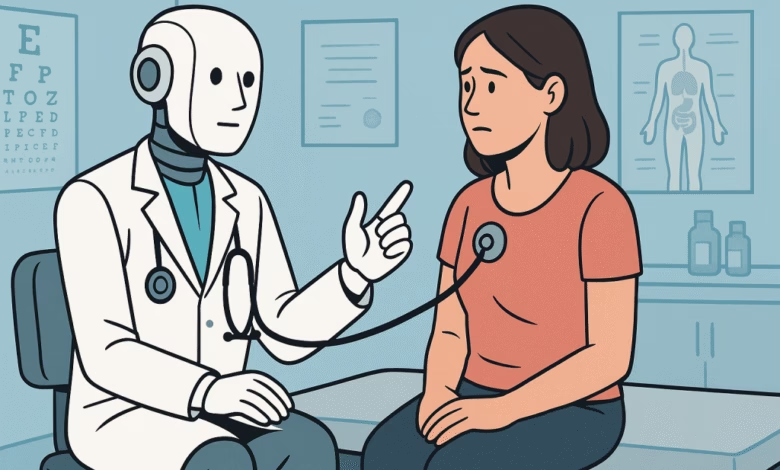Human Input Key to Effective Chatbot Testing, Oxford Study Finds

▼ Summary
– LLMs like GPT-4 can outperform humans on medical licensing exams, answering questions correctly 90% of the time, but struggle in real-world diagnostic scenarios.
– A University of Oxford study found that human participants using LLMs for self-diagnosis identified correct conditions only 34.5% of the time, worse than a control group without LLM assistance.
– Participants often provided incomplete information to LLMs, and the models misinterpreted prompts, leading to incorrect diagnoses and treatment recommendations.
– Simulated AI testers performed better than humans when interacting with LLMs, highlighting a gap between lab benchmarks and real-world usability.
– Experts emphasize the need to design LLMs with human interaction in mind, focusing on user experience and tailored training rather than blaming users for poor outcomes.
Human Interaction Remains Critical for Effective AI Medical Diagnosis, Oxford Research Reveals
While large language models (LLMs) demonstrate impressive accuracy in controlled medical testing, their real-world effectiveness hinges on human interaction. A recent University of Oxford study found that despite LLMs correctly identifying conditions 94.9% of the time in isolated scenarios, human users leveraging these tools achieved accurate diagnoses less than 34.5% of the time. Surprisingly, participants relying solely on self-diagnosis methods outperformed those using AI assistance.
The research, led by Dr. Adam Mahdi, involved 1,298 participants simulating patient interactions with three leading LLMs: GPT-4o, Llama 3, and Command R+. Each participant received detailed medical scenarios, ranging from pneumonia to subarachnoid hemorrhage, and was instructed to consult an LLM for diagnosis and treatment recommendations. Behind the scenes, physicians established benchmark answers for comparison.
The results were striking. While LLMs independently excelled, human users struggled to extract accurate insights. Even when the AI provided correct diagnoses, participants frequently misinterpreted or ignored the advice. For example, one case involving gallstone symptoms was misdiagnosed as indigestion due to incomplete user input. Only 44.2% of participants chose the correct course of action, compared to 56.3% accuracy when LLMs operated autonomously.
Why the disconnect? Researchers identified two key issues: incomplete user prompts and misinterpretation by AI. Participants often omitted critical details, while LLMs failed to ask clarifying questions. Nathalie Volkheimer, a UX specialist at UNC Chapel Hill, likened the challenge to early internet search behavior. “Just as users once struggled with keyword queries, they now face difficulties framing effective prompts for AI,” she noted.
The study underscores a broader lesson for AI deployment in healthcare and customer service. Traditional benchmarks, like medical licensing exams, measure knowledge retention, not real-world usability. Enterprises risk failure if they evaluate chatbots solely on scripted tests without accounting for human unpredictability.
Can simulated users replace human testing? The Oxford team experimented with AI-generated “patients” to assess LLM performance. While these synthetic testers achieved 60.7% accuracy, their success didn’t translate to real users. AI-to-AI interactions proved smoother, but they poorly predicted actual human behavior.
The takeaway? Designing effective AI tools requires deep user understanding, not just technical prowess. “Blaming users for poor outcomes is counterproductive,” Volkheimer emphasized. Instead, developers must refine training data, prompt engineering, and interaction flows to bridge the gap between machine capability and human needs.
For businesses, this means prioritizing human-centered testing before deployment. Whether in healthcare or customer support, AI’s true potential emerges only when it aligns with real-world user behavior, a lesson underscored by Oxford’s findings.
(Source: VentureBeat)





